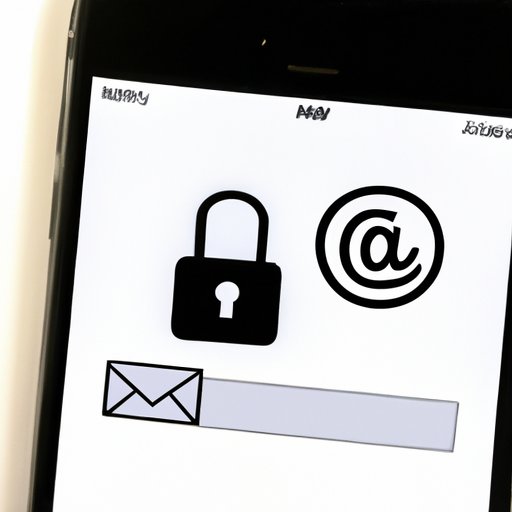
I. Introduction
Your email account is often the center of your online presence, allowing you to communicate, work, and access various services. However, it’s also one of the most targeted accounts for hackers and often one of the easiest to compromise. That’s why it’s crucial to regularly change your email password and adopt secure practices to safeguard your personal information.
II. Straightforward guide
Changing your email password on iPhone is a simple yet essential procedure to enhance your security. Follow these steps:
- Go to Settings and select Passwords & Accounts.
- Select the email account you want to change the password for.
- Select Account and scroll down to find Password. Tap on it.
- Enter your new password and confirm it. Save the changes.
Remember to use a strong and unique password, ideally a combination of letters, numbers, and symbols. Avoid using personal information, common words, or simple patterns.
If you encounter any issues, make sure you have a stable internet connection and verify your email address and password with your email provider. Try restarting your iPhone or updating to the latest software version.
Finally, make sure to update your password on all devices and log out of other sessions to prevent unauthorized access.
III. Video tutorial
If you’re a visual learner or prefer a more interactive approach, you can follow along with this video tutorial:
The video complements the written guide and clarifies any confusing steps or errors.
IV. Best practices
Changing your email password is only one step towards enhancing your security. Here are some best practices to adopt:
- Use a password manager to store and generate strong passwords. This way, you don’t have to memorize them yourself.
- Change your password every few months or whenever you suspect a breach or suspicious activity. Don’t reuse old passwords.
- Enable two-factor authentication to add an extra layer of security. This requires a code or prompt sent to your phone or email in addition to your password.
- Avoid using public Wi-Fi or unsecured networks to check or send emails. This increases the risk of interception or hacking.
- Keep your device and software up to date to address security vulnerabilities and bugs.
By adopting these practices, you can reduce the risk of your email account being hacked, abused or compromised.
V. Third-party apps
If you find it challenging to keep track of multiple passwords or want to simplify the password-changing process, you can use third-party password management apps. These tools can store your passwords securely, generate strong and unique passwords, and auto-fill your login details on various services. Some popular password management apps for iPhone include:
- 1Password
- LastPass
- Bitwarden
- Dashlane
Using a password manager can save you time, reduce the risk of forgetting or reusing passwords, and enhance your overall security.
VI. Security considerations
Changing your email password is not only a matter of convenience or preference but also a security necessity. Email accounts often contain sensitive information, such as personal data, financial details, or confidential communications. If a hacker gains access to your email, they can potentially steal your identity, money, or reputation.
Moreover, email accounts are often used as a primary login credential for various services, such as social media, cloud storage, or banking. If you use the same password across multiple accounts or fail to update it regularly, you significantly increase the risk of a data breach or identity theft.
Therefore, changing your email password periodically and adopting secure practices can help you mitigate these risks and protect your personal information from cyber threats.
VII. Common mistakes to avoid
While changing your email password is a relatively straightforward process, it’s essential to avoid some common mistakes that can compromise your security. For instance:
- Not updating the password on all devices or platforms, leaving them vulnerable to unauthorized access or hacking.
- Using weak or predictable passwords, such as “password123” or “123456”, that can be easily guessed or brute-forced by hackers.
- Forgetting to log out of other sessions, such as on public computers or devices, that can leave your account open for others to use.
By avoiding these mistakes and following the best practices, you can ensure your email security and protect your personal information from potential threats.
VIII. Conclusion
Changing your email password on iPhone is a simple and crucial step towards enhancing your security and safeguarding your personal information. Follow this guide, complemented by a video tutorial, to ensure a smooth and secure procedure. Adopt best practices, such as using a password manager, enabling two-factor authentication, and avoiding public Wi-Fi. Keep in mind the risks of email hacking or data breaches and regularly change your password to mitigate them. Finally, avoid common mistakes and embrace secure practices to reduce the risk of cyber threats and ensure a peaceful online experience.





